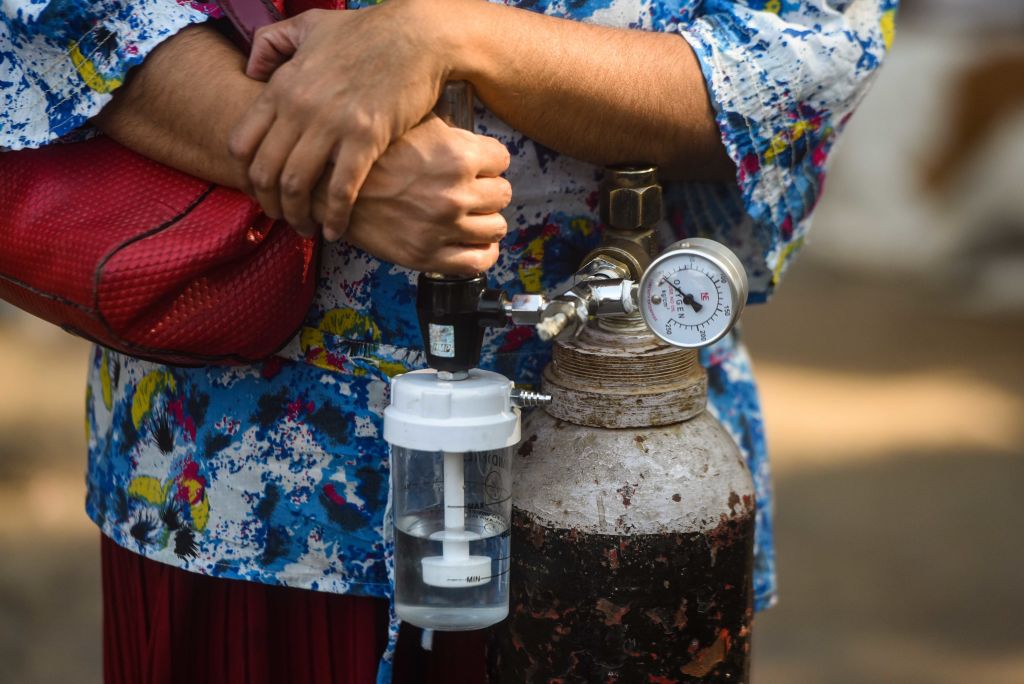Preeti Namjoshi, a 26-year-old resident doctor in the final days of her three-year masters’ degree in internal medicine, was supposed to be preparing for final exams right now. Instead she finds herself struggling to assist with the surging number of people sick and dying from COVID-19 at Government Medical College and Hospital in Nagpur.
In mid-March, Nagpur, in Maharashtra, became the first city in India to return to lockdown this year. A month later in mid-April, it was recording over five thousand cases every day. For Namjoshi, this meant that additional COVID wards that were shut down only in December were reopened again. Within a week or two there were more sick patients seeking treatment than the hospital had room for and the hospital stopped admissions—at first for several hours each day, and then for five full days.
“We had to shut our doors because we had no oxygen ports left. We were connecting three patients to one port,” Namjoshi says. Since then, the situation has remained dire. Sometimes even patients with 30 percent oxygen saturation levels—according to the US Centers for Disease Control and Prevention, oxygen saturation of 95 to 100 percent is normal for healthy children and adults—and minutes to live are turned away.
“What’s happening right now is that one patient dies and that’s when one patient gets admitted. You have to wait for two or three hours outside the casualty. Somebody dies, you get a bed; and there’s already a line of fifty patients waiting,” she says.
Namjoshi recalled a grim evening last year when, following a surge in cases, the oxygen supply in their hospital suddenly ran out, leading to the death of seven patients in the ICU ward where she was on duty. The hospital was now taking precautions to prevent a repeat of that terrible night, but Namjoshi says, the infection is spreading more rapidly throughout the region and entire families are showing up infected and in need of emergency assistance. Resources remain scarce. Resident doctors are finding themselves unprepared once again.
“As a medical community right now, we are carrying a massive guilt. We are unable to treat patients,” Namjoshi says. “There’s a reason we became doctors. We never thought that drugs or beds would be in short supply. Failure of treatment is one thing but now without giving us a chance to treat patients, they are dying. If there is no oxygen or Remdesivir, the person will die, whether at home or on a hospital bed. You’re just giving them a different environment to die. You’re not preventing death.”
The constant stress of the COVID ICU ward never leaves her. A Whatsapp group where doctors consult on patients is always buzzing with notifications. “It’s like constantly being on duty,” she says. “At one point, even when I was sleeping, I could hear ICU beeps. I had vivid dreams where I would see my patients’ faces.”
The direness of the second wave hits home every single day. Only a 100 metres away from her hostel room is a four-storey trauma building, converted to a COVID building, which at any point of the day now has about 500 people waiting outside. “We hear the ambulance wailing, and we hear constant crying. Everytime I step out, it’s like I am alive but I can understand what they are going through. I am going through it, too, because my family is also affected,” Namjoshi says.
“The mortuary is further away so the bodies are taken there. At least that part doesn’t happen in front of our eyes. It’s a small mercy.”



